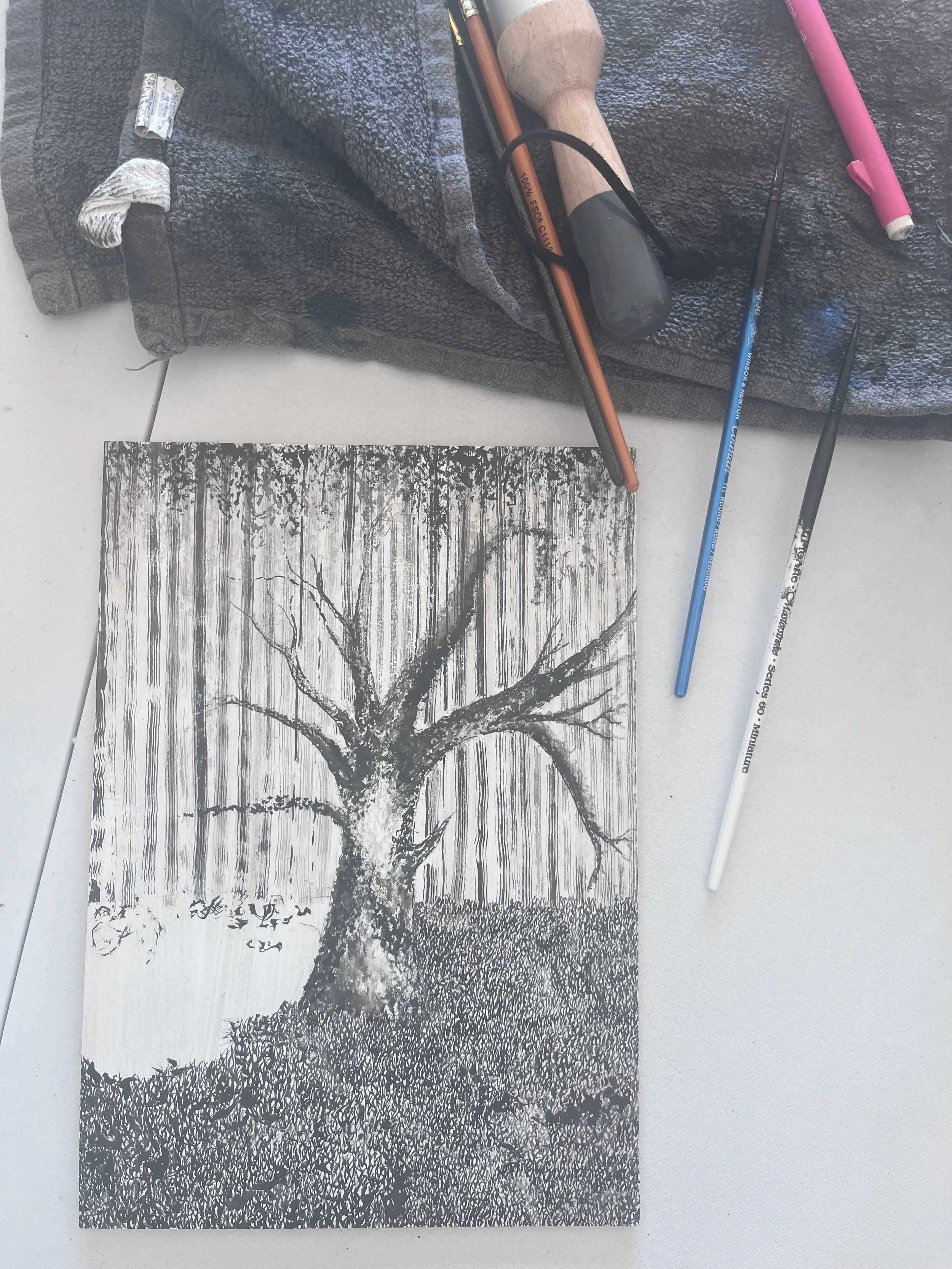Wood Experiments.
THe Materials We Paint On.
I have been thinking for some time about the material that sits beneath my paintings. The support is often treated as neutral, yet it shapes so much of the work. It determines how the ink settles, spreads, or resists. It influences the energy of each brushstroke and the atmosphere that emerges. This thought has been lingering in the background for months, and it finally felt necessary to test it properly. I wanted to understand not just how the image sits on the surface, but how the surface shapes the image in return.
To do this, I bought five small plywood sheets and decided to paint the same composition on each one. The only difference would be the preparation of the wood. My intention was to watch how each layer altered the dialogue between ink and grain, and how those shifts affected the mood of the final piece.
Part of the draw of wood lies in its closeness to the subjects I often paint. Many of my compositions come from trees, forests, and landscapes where the material substance of the world feels present and textured. Painting directly onto wood seemed like a way to fold the work back into those environments. The support becomes part of the story rather than a hidden stage. I was curious to see whether this would bring a different grounding to the image, connecting the finished piece more directly to the raw materials that first inspired it.
For this initial test, I worked in A5. Keeping the scale small allowed the focus to rest on the differences in surface rather than the complexity of the composition. I can imagine moving to a larger sheet later once I understand the subtleties that emerged in these early trials.
Each board was prepared differently. The first was left as raw wood with a simple ink wash. The second had one coat of oil based primer. The third had two coats. The fourth had three. The fifth and final board had four coats before the ink was applied.
Painting onto the raw wood was the greatest challenge. The ink was absorbed almost instantly and the surface sucked it in before I could guide it. This removed much of the fluidity that I rely on. The grain pushed back in unexpected ways. The brush felt less able to glide and the details I often strive for were harder to achieve. It carried a very different energy from my usual work, almost as if the wood insisted on speaking first.
As the layers of primer increased, the behaviour of the ink grew more familiar. Each coat softened the pull of the wood and allowed the ink to sit for longer on the surface. By the time I reached the final board, the ink moved with a rhythm closer to what I am used to, though not identical. The primer acted as a mediator between the image and the material, creating a balance somewhere between absorption and resistance. That space between the two carried its own character.
Even with these improvements, I found myself missing the subtle unevenness of canvas boards. There is a texture in them that provides a quiet friction. It gives the ink something to hold onto and introduces small imperfections that bring life to the work. This absence made me consider how I might combine materials. As a next step, I want to work with a larger sheet of wood and stretch a layer of calico over it. This may allow the grounded quality of the wood to remain, while reintroducing the gentle irregularity of fabric. I am interested in how the two materials might speak to each other, and whether that combination could open a new direction for future pieces.
Landscapes rarely present a single texture. They are layered and shifting, shaped by weather, growth, erosion, and time. I want the materials I choose to echo that complexity. It feels important to let the surface carry some of that layered energy rather than keeping it solely within the composition.
Repeating the same image five times was revealing in its own right. Repetition created space to notice subtle variations. Each version brought something forward that I had missed in the previous attempt. I became less protective over the composition and more open to experimentation. Allowing the process to loosen in this way helped me discover new methods for building texture, especially within the bark and the ink washes. It also highlighted how sensitive each brush is to each surface, and how a small shift can change the mood of the whole piece.
This experiment was a reminder of how the materials we choose carry their own histories and behaviours. They are not passive supports but active collaborators. Working with wood made this relationship more visible. It showed me how the surface can steer the direction of a painting, sometimes resisting, sometimes offering unexpected developments. I will carry these discoveries into the next stage of my work, where the question of how surface and subject intertwine continues to guide my thinking.












